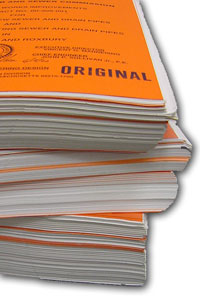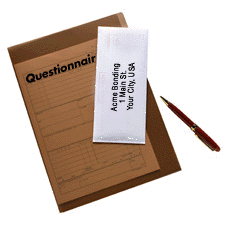
Service Information
Surety Bonds
Making the right choice to mitigate and manage risk on wireless construction projects and selecting the most fiscally responsible option to ensure timely project completion are imperative to a successful project – and a sound business. Gambling on a contractor or subcontractor whose level of commitment is uncertain or who could become bankrupt halfway through the job can be an economically devastating decision. Surety bonds offer the optimal solution: providing financial security and construction assurance by assuring project owners that contractors will perform the work and pay specified subcontractors, laborers, and material suppliers. laborers, and material suppliers.
Surety bond premiums vary from one surety to another, but can range from one-half of one percent to two percent of the contract amount, depending on the size, type, and duration of the project and the contractor.
We recommend that you contact our listed surety bond agents to obtain additional information about their services, capabilities and experience.
10 things you should know about bonding
1. A surety bond is a three-party agreement where the surety company assures the obligee (owner) that the principal (contractor) will perform a contract. Surety bonds used in construction are called contract surety bonds.
2. There are three primary types of contract surety bonds. The bid bond provides financial assurance that the bid has been submitted in good faith and that the contractor intends to enter the contract at the price bid and provide the required performance and payment bonds. The performance bond protects the owner from financial loss should the contractor fail to perform the contract in accordance with its terms and conditions. The payment bond assures that the contractor will pay certain workers, subcontractors, and materials suppliers. bond provides financial assurance that the bid has been submitted in good faith and that the contractor intends to enter the contract at the price bid and provide the required performance and payment bonds. The performance bond protects the owner from financial loss should the contractor fail to perform the contract in accordance with its terms and conditions. The payment bond assures that the contractor will pay certain workers, subcontractors, and materials suppliers.
3. Most surety companies are subsidiaries or divisions of insurance companies, and both surety bonds and traditional insurance policies are risk transfer mechanisms regulated by state insurance departments. However, traditional insurance is designed to compensate the insured against unforeseen adverse events. The policy premium is actuarily determined based on aggregate premiums earned versus expected losses. Surety companies operate on a different business model. Surety is designed to prevent loss. The surety prequalifies the contractor based on financial strength and construction expertise. Since the bond is underwritten with little expectation of loss, the premium is primarily a fee for prequalification services.
4. Since 1893, the U.S. Government has required contractors on federal public works contracts to obtain surety bonds to guarantee they will perform such contracts and pay certain subcontractors and suppliers. The Miller Act (40 U.S.C. Section 270a et. seq.) requires performance and payment bonds for all public work contracts in excess of $100,000 and payment protection, with payment bonds the preferred method, for contracts in excess of $25,000. Also, almost all 50 states, the District of Columbia, Puerto Rico, and most local jurisdictions have enacted similar legislation requiring surety bonds on public works. These generally are referred to as “Little Miller Acts.” Owners of private construction also manage risk by requiring surety bonds. they will perform such contracts and pay certain subcontractors and suppliers. The Miller Act (40 U.S.C. Section 270a et. seq.) requires performance and payment bonds for all public work contracts in excess of $100,000 and payment protection, with payment bonds the preferred method, for contracts in excess of $25,000. Also, almost all 50 states, the District of Columbia, Puerto Rico, and most local jurisdictions have enacted similar legislation requiring surety bonds on public works. These generally are referred to as “Little Miller Acts.” Owners of private construction also manage risk by requiring surety bonds.
5. Construction is a risky business. Surety bonds offer assurance that the contractor is capable of completing the contract on time, within budget, and according to specifications. Specifying bonds not only reduces the likelihood of default, but with a surety bond, the owner has the peace of mind that a sound risk transfer mechanism is in place. The burden of construction risk is shifted from the owner to the surety company.
6. Surety bond premiums vary from one surety to another, but can range from one-half of one percent to two percent of the contract amount, depending on the size, type, and duration of the project and the contractor. Typically, there is no direct charge for a bid bond. In many cases, performance bonds incorporate payment bonds and maintenance bonds, so there is no additional premium charged for those services.
7. The surety company’s rigorous prequalification of the contractor protects the project owner and offers assurance to the lender, architect, and everyone else involved with the project that the contractor is able to translate the project’s plans into a finished  project. Surety companies and surety bond producers have been evaluating contractor and subcontractor performance for more than a century. Their expertise, experience, and objectivity in prequalifying contractors is one of a bond’s most valuable attributes. Before issuing a bond, the surety company must be fully satisfied, among other criteria, that the contractor has: project. Surety companies and surety bond producers have been evaluating contractor and subcontractor performance for more than a century. Their expertise, experience, and objectivity in prequalifying contractors is one of a bond’s most valuable attributes. Before issuing a bond, the surety company must be fully satisfied, among other criteria, that the contractor has:
- good references and reputation;
- the ability to meet current and future obligations;
- experience matching the contract requirements;
- the necessary equipment to do the work or the ability to obtain it;
- the financial strength to support the desired work program;
- an excellent credit history; and
- an established bank relationship and line of credit.
8. Contractor default is an unfortunate, and sometimes unavoidable, circumstance. In the event of contractor failure, the owner must formally declare the contractor in default. The surety conducts an impartial investigation prior to settling any claim. This protects the contractor’s legal recourse in the event that the owner improperly declares the contractor in default. When there is a proper default, the surety’s options often are spelled out in the bond. These options may include the right to re-bid the job for completion, bring in a replacement contractor, provide financial and/or technical assistance to the existing contractor, or pay the penal sum of the bond. Evidence of owners being shielded from risk is evidenced by surety companies having paid nearly $1.8 billion due to contractor failure on bonded projects in 2000 and 2001, according to The Surety Association of America, Washington, D.C.
9. When bonds are specified in the contract documents, it is the contractor’s responsibility to obtain them. The contractor generally includes the bond premium amount in the bid and the premium generally is payable upon execution of the bond. If the contract amount changes, the premium will be adjusted for the change in contract price. Contract surety bonds are a wise investment – providing qualified contractors and protecting public owners, private owners, and prime contractors from the potentially devastating expense of contractor and subcontractor failure. contractor’s responsibility to obtain them. The contractor generally includes the bond premium amount in the bid and the premium generally is payable upon execution of the bond. If the contract amount changes, the premium will be adjusted for the change in contract price. Contract surety bonds are a wise investment – providing qualified contractors and protecting public owners, private owners, and prime contractors from the potentially devastating expense of contractor and subcontractor failure.
10. After analyzing the risks involved with a construction project, consider how surety bonds protect against those risks. Owners, lenders, taxpayers, contractors, and subcontractors are protected because:
- The contractor has undergone a rigorous prequalification process and is judged capable of fulfilling the obligations of the contract;
- Contractors are more likely to complete bonded projects than non-bonded projects since the surety company may require personal or corporate indemnity from the contractor;
- Subcontractors have no need to file mechanics’ liens on private projects when a payment bond is in place;
- Bonding capacity can help a contractor or subcontractor grow by increasing project opportunities and providing the benefits of assistance and advice of the surety bond producer and underwriter;
- Surety companies may prevent default by offering technical, financial, or management assistance to a contractor; and
- The surety company fulfills the contract in the event of contractor default.
If you are applying for your first bid, performance and payment bond, the Surety agency is going to ask for a host of information and documentation. Be prepared to allow plenty of time to provide these reports and detailed forms. Minimum items that will be required are:
Company Financial Statements: You’ll need to provide CPA prepared company statements for the last three fiscal year ends, using the accrual or percentage of completion method of accounting. If the latest company statement is more than six months old, you will have to provide an interim statement. ends, using the accrual or percentage of completion method of accounting. If the latest company statement is more than six months old, you will have to provide an interim statement.
Personal Financial Statements: You will be requested to provide personal financial statements for all principal owners or partners, dated concurrently with your company’s fiscal year end.
Schedule of Work in Progress: A current schedule of your completed and uncompleted work will be required.
Bank Letter: The letter is to be written by your banker and must include your past relationship with the bank, average bank balances, line of credit available, and lending terms.
Reference Letters: These letters should be from owners on previously completed projects.
Contractor Questionnaire: An extensive questionnaire is typically requested by the Surety agent.
Resumes of Owners and Key Personnel: You’ll need to provide a brief narrative of each individual's background and experience.
|